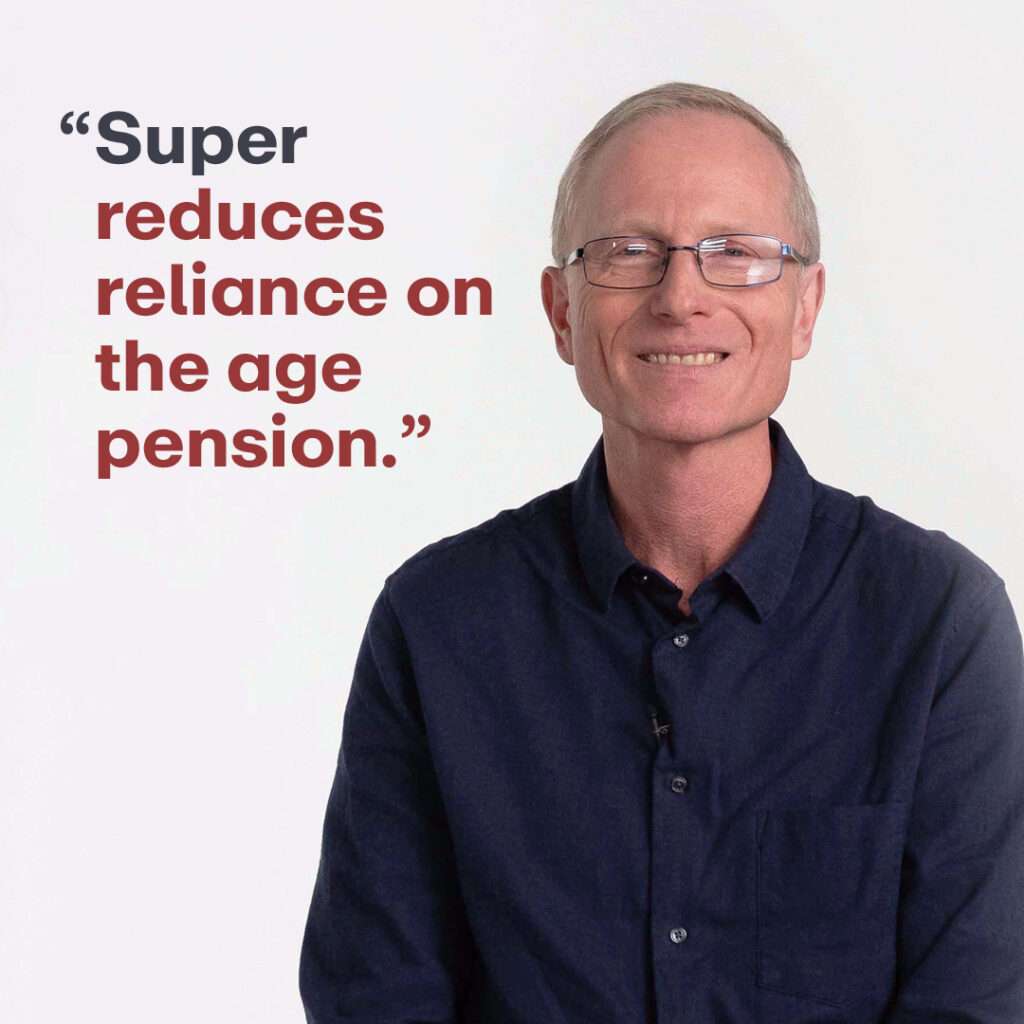Australians today retire in their own ways. While one option is to wind up work and take a lump sum from your superannuation (super) savings, it’s not a one-size-fits-all approach.
People retire at different ages, for various reasons and with personal strategies, so it’s important to make a plan that works for you. Most importantly, with money in your super account, you have choices.
Just $100,000 in super can lift your retirement income by 20%1
As well as super, your income in retirement can also come from the Government Age Pension, your investments and payments from any casual work you do. But super has now become the largest contributor to Australians’ retirement income – with $200,000 the average super balance today, growing to about $500,000 by 2055.2
So even a small amount of super can make a big difference to your future.

When you can access your super
Key to super reaching these substantial figures is the principle of preservation.
Preservation is the requirement to leave your super to grow until you turn 65 or reach ‘preservation age’ of 60. And when you do, you have several options.
Retire and withdraw your super – If you want to access your super once you stop working, you’re entitled to once you reach preservation age. Bear in mind, you also have the option to keep these savings growing in a retirement account, and pay zero tax on earnings.
Withdraw your super at age 65 – At 65 you can withdraw some or all of your super balance tax free. Of course this means the monies withdrawn cannot keep growing within your superannuation account with the beneficial tax treatment.
Keeping super invested at retirement can mean tax-free earnings and income
Keep your super in your super account – If you’d like to keep working casually, you can continue to add to your super, but you’ll still pay 15% concessional tax on contributions and earnings capped at $30,000 a year.
Your income doesn’t have to stop because your work has. Once you have retired you can move your money to a retirement style super account where it will stay invested and stay earning, with zero tax on any profits, all while allowing you to draw an income.
You may want to consider more stable, lower-risk investments if you’re nearing retirement. As a member of a profit-to-member super fund, you can choose an investment strategy based on your risk appetite and changing circumstances.
Retire and buy an annuity – You can use your super to buy an annuity, and turn your savings into a guaranteed retirement income.
With an annuity, you’ll choose how long you want to receive the income, and how often you’re paid. And because share market performance doesn’t affect returns, an annuity is a stable retirement investment option.
Use your super to help you transition to retirement – If you want to reduce your working hours to ease into life after work, a transition to retirement (TTR) strategy lets you top up your take home pay, and access your some of your super.
A TTR works by transferring some of your super to an account-based pension, from which you withdraw a regular income. You can choose how much you want to transfer, and how often. And because you’re still working and receiving employer contributions, your super balance continues to grow.
Both annuities and account-based pensions are tax-free from the age of 60, but are also counted as assets in Age Pension eligibility tests.
When you can access the Age Pension
Many people receive both income from their super, and the Age Pension.
The Age Pension is a government safety-net that supports basic living standards for eligible Australians from the age of 67. Eligibility is also determined by your income and the value of your assets – included in income and assets tests to determine how much you could receive.
How much super you need for retirement
As part of our 3-pillar retirement income system (super, pension and personal savings), the Age Pension was designed to supplement your super. And how much super you need depends on how you plan to retire.
While $1 million is sometimes cited as the figure needed for a ‘comfortable retirement’, what that looks like will be impacted by home ownership and other factors and will be different for everyone. Yours may look like a more modest lifestyle, or even semi-retirement if you choose to work reduced hours.
Working towards retirement
Many Australians smooth their transition into retirement (or simply want to stay connected to the workforce) by moving from full to part time hours. But while you continue adding to super as you work, contribution limits apply from the age of 67. This is called the work test.
The work test is applied if you want to claim a tax deduction on voluntary contributions to your super. You must be gainfully employed for 40+ hours in any 30-day period in a financial year, and have less than $1.9 million in super. It’s important to know how your work affects your super, so you can make the most of your contributions.
Other retirement rules and strategies
Be mindful of additional policies that could impact your retirement income, or help increase your super balance.
Deeming rates – Deeming rates are used to work out how much money you’ve made from financial assets at retirement. These include savings accounts, shares, managed investments and bonds, plus super and most account-based pensions.
This amount is then included as income in the Age Pension income test.
Minimum drawdown rates – The government sets minimum ‘drawdown rates’ (the amount you’re required to withdraw each financial year) to payments you receive from retirement income products. This includes TTR and retirement income accounts.
A maximum drawdown rate also applies to TTR accounts.
Downsizing your home and contributing to super – If you’re nearing retirement and considering a move to a smaller property, you may be able to contribute money from the sale of your family home into super.
To make a downsizer contribution, you must be 55 or older and meet eligibility requirements.
Planning for retirement
If you’re nearing retirement, there are many tools and strategies available to help you prepare for the transition.
Extra contributions – Whether as one-off or regular payments, you can make personal contributions to build your super balance while you’re still working.
Retirement calculator – See how making extra super contributions may affect your retirement income with a retirement planner calculator.
Transition to retirement – Consider taking advantage of a TTR if you want to access some of your super without giving up work completely.
Understand investments – If you have investments such as property, be aware of how selling or keeping them affects your costs, tax obligations and eligibility for government benefits.
Supplement super – Explore how you could combine the right super strategy with the Age Pension to make your money last longer.
Financial advice – Check your fund for free general advice, or fee-for-service financial advice to help you manage your super with the strategies on offer.
As Super Members Council guides the public on how super works, we’ll continue to ensure this powerful policy works for all Australians.
FAQs
-
When can I access my super?
You can access your super when you turn 65 or reach preservation age. But you also have the option to keep super invested and growing, continue to do some work and draw a regular retirement income stream.
-
How much super do I need in retirement?
There’s no ‘magic’ number. What makes a comfortable retirement depends on the lifestyle you plan in retirement, and the Age Pension works together with your super as a supplementary safety net.
-
How can I better plan for retirement?
There are many tools, services and strategies you can access to help you plan for the retirement you want. Your super fund may also offer qualified financial advisers to help you implement the right strategy for you.
References:
1. SMC modelling based on $100,000 balance, full Age Pension at minimum drawdown rate.
2. SMC analysis
The information set out on this website is of a general nature only and should not be taken as a complete or definitive statement about superannuation. You should not make decisions concerning your superannuation arrangements solely based on the information contained on this website which has been prepared without taking into account your objectives, financial situation or needs.
